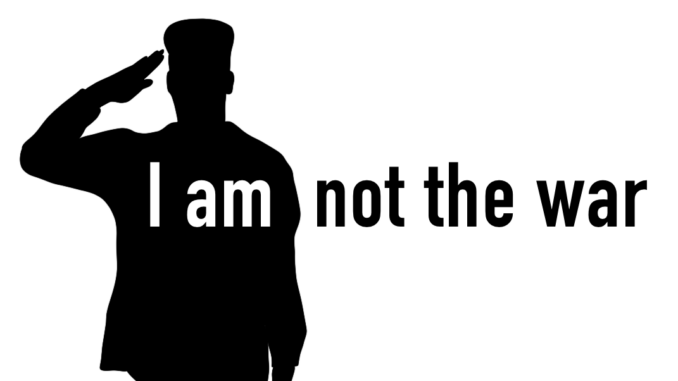
This Thursday, Nov. 11, is Veteran’s Day.
But what does this actually mean? Who is a veteran? And what should we do on this day? All of these are questions that come to mind. Themes of nationalism, anti-war beliefs and American politics come to mind, as well.
The concept of the military in and of itself is a highly political and controversial topic. We are students at New Paltz. This statement is nearly synonymous with liberal views and anti-war beliefs.
Veteran’s Day, however, doesn’t need to be a day to celebrate the military if it doesn’t align with your politics; but it can be a day to learn about those who served, why they enlisted and the current conditions of veterans in America.”. The purpose of the day is to highlight and respect the struggles of veterans and their families. It is easy to forget that veterans are individuals outside the entity of the military, while still acknowledging the institutional failures of the military itself.
These institutional failures simply must be acknowledged. Military recruitment as a cycle is corrupt. While some recruits dream of serving, there are, of course, some who are drawn in for other reasons, like the benefits that come with service, and the security it appears to offer.
The RAND Statistical Corporation conducted a research survey in 2018 asking military members why they joined. The results were disappointing: 32% cited adventure/travel as reasons for enlistment, 25% cited benefits and 19% cited job stability and pay. Only 9% said that they had always dreamed of service. This survey is discussed on the Task and Service website.
Because of the promises of stability, income and career opportunities for those who do not excel academically or in traditional paths, the military draws in a demographic of individuals who feel as if they have no other option. Due to the G.I. Bill, a law that provides educational benefits for those who serve, people also often join the military to pay for their education. Healthcare and military insurance are other common reasons people serve.
There is something sinister to be said about the government funding that the recruitment and general function of the military receives, yet this funding is not extended to the education system.
One of the writers at the Oracle, Lily Seemann, was born on a military base and grew up moving with her dad, David Seemann, who served in the Army. We asked him what his experience in the Army was like and why he chose to enlist. He told us that growing up poor on Long Island did not afford him any other opportunities for the future, and the military was the only place he could go.
“I did not join the military under my own free will, my brother and I were forced to,” he says. Despite the circumstances, he is proud of his service and the sacrifices he made. “I have nothing but the utmost respect and honor for those that have served, or are serving, and those that will serve.”
When thinking about Veteran’s Day, we must first define “veteran.” This term is defined as any person who served in the active military. Soldiers are veterans, of course, but so are engineers, chemists, medics and pilots. Any person who served active duty in one of the branches of the military and left under conditions other than dishonorable has earned the title of veteran.
There are around 19 million veterans alive today, according to the U.S. Department of Veteran Affairs. 41% of these veterans served in the Gulf-war era of service, which means they served fairly recently. Of these current veterans, 37% are over 70. 23% of these current veterans are people of color. 11% are women. This survey and an analysis of its results can be found at the Pew Research Center website. The demographics of those who serve are rapidly changing.
No matter who a veteran is, or what their journey into enlisting looks like, they all carry the burden, struggle and trauma of service. Veterans deserve our support and respect, no matter your personal opinions. The actual trauma of combat includes an unspeakable amount, including grappling with death and loss, survivor’s guilt, being away from your family and being an actual soldier in conflict.
It is no surprise that mental health in veterans is an undeniable issue. According to the U.S. Department of Veteran Affairs, 1 in 3 veterans struggle with severe depression, around 20% struggle with PTSD, and 9.9% struggle with anxiety. The department website has all of the statistics posted, as well as what solutions are currently in progress.
At New Paltz alone, we have 300 military affiliated students. This includes veterans, active members, spouses and even dependent children. Our staff, administration, and especially the Veterans and Military Service Department do all that they can to support these students. The VMS Department wanted to directly thank the school and student body for their support and accommodations. New Paltz supports veterans, and as a student body we should offer our respect on Nov. 11, as well.
This Thursday, the department is hosting their 8th annual Veteran’s Day celebration in the MPR of the SUB from 4-6 p.m. There will be a toast and speeches given by student veterans and active service members. The department invites the entire student body to come attend and hear their members’ experience first hand, to gain not only a sense of empathy and understanding, but also to understand that Veteran’s Day has a serious impact on this very campus.
This Veteran’s Day, we at the Oracle ask two simple things from the student body here: educate yourself on the veteran experience despite your own views, and consider attending the event on Nov. 11 to hear stories from your peers firsthand.
